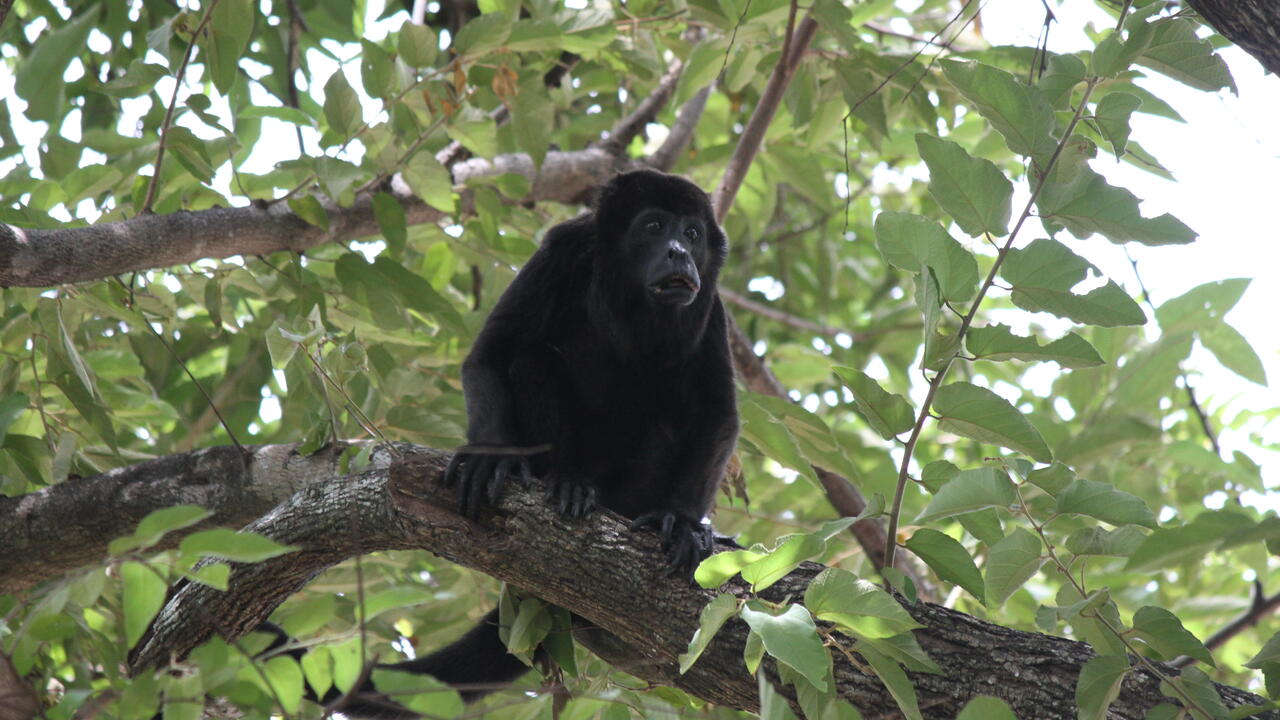
Study sheds light on the solitary life of male primates
A new study on primate behaviour sheds light on a previously little-known life stage of male mantled howler monkeys, adding to our knowledge of lone male behavioural ecology.

A new study on primate behaviour sheds light on a previously little-known life stage of male mantled howler monkeys, adding to our knowledge of lone male behavioural ecology.
By Media RelationsA new study on primate behaviour sheds light on a previously little-known life stage of male mantled howler monkeys, adding to our knowledge of lone male behavioural ecology.
“The findings help us understand more about a number of animal species whose males live solitary lives after sexual maturity,” says lead author of the study Laura Bolt, an adjunct assistant professor of Anthropology at the University of Waterloo.
The study focuses on mantled howler monkeys living in a Costa Rican rainforest, primates that typically live in social groups of 10-15 individuals containing more females than males. Both males and females usually leave their birth groups at sexual maturity and join or form new social groups. While the females join new groups quickly, males face high levels of competition for social group membership and may spend up to two years alone before competing to join an existing group or establishing a new group with other solitary individuals.
The researchers studied both lone and group-living male howler monkeys between 2017 and 2020 and compared their tree use, feeding, and long-distance vocalization (howling) behaviour.
“We found that lone males used significantly smaller trees for feeding and resting, consumed lower quality foods, such as stems and vines rather than leaves, and howled less than group-living males,” says Bolt. “These behavioural differences are likely due to group-living males being able to outcompete lone males for access to resources.”
The findings suggest that lone males use smaller trees and less desirable foods as part of a competition avoidance strategy. Lone males are likely to lose any fights they participate in against larger groups and may also be injured or killed during fighting. By avoiding competition, lone males are more likely to stay alive during the months or years it will take them to join a group.
The study demonstrates the advantages of belonging to a social group for male mantled howler monkeys, says Bolt. “Many primate species live in year-round social groups containing both adult males and females, but this is rarer in other animals. This study can also contribute to our understanding of the benefits associated with group living in other animal species.”
Lone males: Solitary and group‐living male howler monkey (Alouatta palliata) behavioral ecology in a Costa Rican rainforest by Bolt, Maeve N. Cavanaugh, and Amy L. Schreier is published in The American Journal of Physical Anthropology.

Read more
New Canada Research Chairs will tackle future-focused problems from social robots and intergroup attitudes to geochemistry and nanoscale devices

Read more
Meet five exceptional Waterloo graduate students crossing the convocation stage as Class of 2025 valedictorians

Read more
Twenty-six researchers receive federal funding to drive discovery, innovation and research infrastructure development
The University of Waterloo acknowledges that much of our work takes place on the traditional territory of the Neutral, Anishinaabeg, and Haudenosaunee peoples. Our main campus is situated on the Haldimand Tract, the land granted to the Six Nations that includes six miles on each side of the Grand River. Our active work toward reconciliation takes place across our campuses through research, learning, teaching, and community building, and is co-ordinated within the Office of Indigenous Relations.